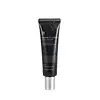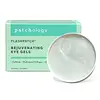What's inside
What's inside
 Key Ingredients
Key Ingredients

 Benefits
Benefits

 Concerns
Concerns

 Ingredients Side-by-side
Ingredients Side-by-side

Galactomyces Ferment Filtrate
HumectantLactobacillus/Collagen Ferment Filtrate
HumectantButylene Glycol
HumectantCaprylic/Capric Triglyceride
MaskingGlycerin
HumectantCetearyl Alcohol
EmollientCetyl Ethylhexanoate
EmollientMacadamia Integrifolia Seed Oil
Skin ConditioningWater
Skin Conditioning1,2-Hexanediol
Skin ConditioningCetearyl Olivate
Pentylene Glycol
Skin ConditioningBifida Ferment Lysate
Skin ConditioningCeramide NP
Skin ConditioningSorbitan Olivate
EmulsifyingSorbitan Stearate
EmulsifyingPropanediol
SolventBetaine
HumectantPanthenol
Skin ConditioningSodium Hyaluronate
HumectantAloe Barbadensis Leaf Extract
EmollientAlthaea Rosea Root Extract
HumectantBeta-Glucan
Skin ConditioningCopper Tripeptide-1
Skin ConditioningPalmitoyl Pentapeptide-4
Skin ConditioningPalmitoyl Tripeptide-1
Skin ConditioningHexapeptide-11
Skin ConditioningHexapeptide-9
Skin ConditioningTripeptide-1
Skin ConditioningAllantoin
Skin ConditioningAcrylates/C10-30 Alkyl Acrylate Crosspolymer
Emulsion StabilisingIsopentyldiol
HumectantArginine
MaskingSucrose Palmitate
EmollientSodium Surfactin
CleansingAdenosine
Skin ConditioningCaprylyl Glycol
EmollientCitrus Paradisi Fruit Extract
Skin ConditioningTocopherol
AntioxidantSchisandra Chinensis Fruit Extract
Skin ConditioningPerilla Ocymoides Leaf Extract
TonicAcorus Calamus Root Extract
PerfumingPolyglyceryl-10 Laurate
Skin ConditioningGalactomyces Ferment Filtrate, Lactobacillus/Collagen Ferment Filtrate, Butylene Glycol, Caprylic/Capric Triglyceride, Glycerin, Cetearyl Alcohol, Cetyl Ethylhexanoate, Macadamia Integrifolia Seed Oil, Water, 1,2-Hexanediol, Cetearyl Olivate, Pentylene Glycol, Bifida Ferment Lysate, Ceramide NP, Sorbitan Olivate, Sorbitan Stearate, Propanediol, Betaine, Panthenol, Sodium Hyaluronate, Aloe Barbadensis Leaf Extract, Althaea Rosea Root Extract, Beta-Glucan, Copper Tripeptide-1, Palmitoyl Pentapeptide-4, Palmitoyl Tripeptide-1, Hexapeptide-11, Hexapeptide-9, Tripeptide-1, Allantoin, Acrylates/C10-30 Alkyl Acrylate Crosspolymer, Isopentyldiol, Arginine, Sucrose Palmitate, Sodium Surfactin, Adenosine, Caprylyl Glycol, Citrus Paradisi Fruit Extract, Tocopherol, Schisandra Chinensis Fruit Extract, Perilla Ocymoides Leaf Extract, Acorus Calamus Root Extract, Polyglyceryl-10 Laurate
Water
Skin ConditioningGlycerin
HumectantDipropylene Glycol
HumectantCeratonia Siliqua Gum
EmollientChondrus Crispus Powder
AbrasiveButylene Glycol
HumectantChondrus Crispus Extract
Skin ConditioningPanthenol
Skin ConditioningCentella Asiatica Extract
CleansingPaeonia Suffruticosa Root Extract
Skin ProtectingChamomilla Recutita Flower Extract
MaskingPortulaca Oleracea Extract
Skin ConditioningCaffeine
Skin ConditioningHydrolyzed Collagen
EmollientCocos Nucifera Fruit Extract
EmollientSodium Hyaluronate
HumectantAloe Barbadensis Leaf Extract
EmollientLonicera Japonica Flower Extract
Skin ConditioningCalendula Officinalis Extract
Skin ConditioningLavandula Angustifolia Extract
Skin ConditioningSyringa Vulgaris Extract
Skin ConditioningRosmarinus Officinalis Extract
AntimicrobialMentha Arvensis Leaf Extract
MaskingMonarda Didyma Leaf Extract
Skin ConditioningJasminum Officinale Extract
MaskingFreesia Refracta Extract
Skin ConditioningAcetyl Tetrapeptide-5
HumectantTrideceth-6
EmulsifyingBetaine
Humectant1,2-Hexanediol
Skin ConditioningCellulose Gum
Emulsion StabilisingXanthan Gum
EmulsifyingGlyceryl Caprylate
EmollientPotassium Chloride
Sodium Polyacrylate
AbsorbentSucrose
HumectantEthylhexylglycerin
Skin ConditioningSynthetic Fluorphlogopite
Polysorbate 20
EmulsifyingHydrogenated Polydecene
EmollientDipotassium Glycyrrhizate
HumectantAllantoin
Skin ConditioningPantolactone
HumectantPolyglutamic Acid
Skin ConditioningAcetyl Glucosamine
Skin ConditioningUrea
BufferingYeast Amino Acids
HumectantTrehalose
HumectantInositol
HumectantTaurine
BufferingPotassium Sorbate
PreservativeGlutathione
Disodium EDTA
Phenoxyethanol
PreservativeCI 77891
Cosmetic ColorantMica
Cosmetic ColorantParfum
MaskingWater, Glycerin, Dipropylene Glycol, Ceratonia Siliqua Gum, Chondrus Crispus Powder, Butylene Glycol, Chondrus Crispus Extract, Panthenol, Centella Asiatica Extract, Paeonia Suffruticosa Root Extract, Chamomilla Recutita Flower Extract, Portulaca Oleracea Extract, Caffeine, Hydrolyzed Collagen, Cocos Nucifera Fruit Extract, Sodium Hyaluronate, Aloe Barbadensis Leaf Extract, Lonicera Japonica Flower Extract, Calendula Officinalis Extract, Lavandula Angustifolia Extract, Syringa Vulgaris Extract, Rosmarinus Officinalis Extract, Mentha Arvensis Leaf Extract, Monarda Didyma Leaf Extract, Jasminum Officinale Extract, Freesia Refracta Extract, Acetyl Tetrapeptide-5, Trideceth-6, Betaine, 1,2-Hexanediol, Cellulose Gum, Xanthan Gum, Glyceryl Caprylate, Potassium Chloride, Sodium Polyacrylate, Sucrose, Ethylhexylglycerin, Synthetic Fluorphlogopite, Polysorbate 20, Hydrogenated Polydecene, Dipotassium Glycyrrhizate, Allantoin, Pantolactone, Polyglutamic Acid, Acetyl Glucosamine, Urea, Yeast Amino Acids, Trehalose, Inositol, Taurine, Potassium Sorbate, Glutathione, Disodium EDTA, Phenoxyethanol, CI 77891, Mica, Parfum
 Reviews
Reviews

Ingredients Explained
These ingredients are found in both products.
Ingredients higher up in an ingredient list are typically present in a larger amount.
1,2-Hexanediol is a synthetic liquid and another multi-functional powerhouse.
It is a:
- Humectant, drawing moisture into the skin
- Emollient, helping to soften skin
- Solvent, dispersing and stabilizing formulas
- Preservative booster, enhancing the antimicrobial activity of other preservatives
Allantoin is a soothing ingredient known for its protective and moisturizingg properties. Because of this, it is often added to products with strong active ingredients.
Studies show higher concentrations of this ingredient can promote wound healing.
Though it can be derived from the comfrey plant, allantoin is produced synthetically for cosmetic products to ensure purity.
Learn more about AllantoinAloe Barbadensis Leaf Extract is an extract of the leaves of the aloe, Aloe barbadensis, Liliaceae.
Aloe is one of the most well-known natural soothing ingredients, and for good reason. It’s full of water and has a cooling, calming effect on the skin, especially when it’s sunburned, itchy, or irritated. Aloe also helps your skin stay hydrated and smooth by mimicking what healthy skin naturally produces. On top of that, it contains vitamins and nutrients that support skin recovery.
It doesn’t protect you from the sun, but it can help your skin bounce back after too much time in it.
Let’s get into the details:
Aloe contains antioxidant Vitamins A, C, and E, which help fight off free radicals (unstable molecules from things like pollution that can damage your skin).
It’s also rich in polysaccharides, which are natural sugars that help hydrate the skin by acting like the skin’s own moisturizing agents. These, along with other sugars like monosaccharides, help form a protective barrier that locks in moisture.
Aloe works as both a humectant and an emollient. That means it draws water into the skin (humectant) and helps trap it there (emollient), making it an effective natural moisturizer.
You’ll also find a mix of other skin-supporting ingredients in aloe, including folic acid, choline, calcium, amino acids, fatty acids, and even Vitamin B12.
Out of the 420+ species of aloe, Aloe barbadensis is the most widely used in skincare products thanks to its gentle yet effective properties.
There are over 420 species of aloe but Aloe Barbadensis is the most commonly used for topical products.
Learn more about Aloe Barbadensis Leaf ExtractBetaine is a common humectant (a substance that promotes retention of moisture). It's known to be gentle on the skin and can help balance hydration.
This ingredient is best for improving hydration and soothing irritated skin. Studies also show it helps even out skin tone.
Fun fact: Betaine is naturally created in the skin and body. The kind found within cosmetic products can be either plant-derived or synthetic.
Another name for betaine is trimethylglycine.
Learn more about BetaineButylene Glycol (or BG) is used within cosmetic products for a few different reasons:
Overall, Butylene Glycol is a safe and well-rounded ingredient that works well with other ingredients.
Though this ingredient works well with most skin types, some people with sensitive skin may experience a reaction such as allergic rashes, closed comedones, or itchiness.
Learn more about Butylene GlycolGlycerin is already naturally found in your skin. It helps moisturize and protect your skin.
A study from 2016 found glycerin to be more effective as a humectant than AHAs and hyaluronic acid.
As a humectant, it helps the skin stay hydrated by pulling moisture to your skin. The low molecular weight of glycerin allows it to pull moisture into the deeper layers of your skin.
Hydrated skin improves your skin barrier; Your skin barrier helps protect against irritants and bacteria.
Glycerin has also been found to have antimicrobial and antiviral properties. Due to these properties, glycerin is often used in wound and burn treatments.
In cosmetics, glycerin is usually derived from plants such as soybean or palm. However, it can also be sourced from animals, such as tallow or animal fat.
This ingredient is organic, colorless, odorless, and non-toxic.
Glycerin is the name for this ingredient in American English. British English uses Glycerol/Glycerine.
Learn more about GlycerinPanthenol is a common ingredient that helps hydrate and soothe the skin. It is found naturally in our skin and hair.
There are two forms of panthenol: D and L.
D-panthenol is also known as dexpanthenol. Most cosmetics use dexpanthenol or a mixture of D and L-panthenol.
Panthenol is famous due to its ability to go deeper into the skin's layers. Using this ingredient has numerous pros (and no cons):
Like hyaluronic acid, panthenol is a humectant. Humectants are able to bind and hold large amounts of water to keep skin hydrated.
This ingredient works well for wound healing. It works by increasing tissue in the wound and helps close open wounds.
Once oxidized, panthenol converts to pantothenic acid. Panthothenic acid is found in all living cells.
This ingredient is also referred to as pro-vitamin B5.
Learn more about PanthenolSodium Hyaluronate is hyaluronic acid's salt form. It is commonly derived from the sodium salt of hyaluronic acid.
Like hyaluronic acid, it is great at holding water and acts as a humectant. This makes it a great skin hydrating ingredient.
Sodium Hyaluronate is naturally occurring in our bodies and is mostly found in eye fluid and joints.
These are some other common types of Hyaluronic Acid:
Learn more about Sodium HyaluronateWater. It's the most common cosmetic ingredient of all. You'll usually see it at the top of ingredient lists, meaning that it makes up the largest part of the product.
So why is it so popular? Water most often acts as a solvent - this means that it helps dissolve other ingredients into the formulation.
You'll also recognize water as that liquid we all need to stay alive. If you see this, drink a glass of water. Stay hydrated!
Learn more about Water